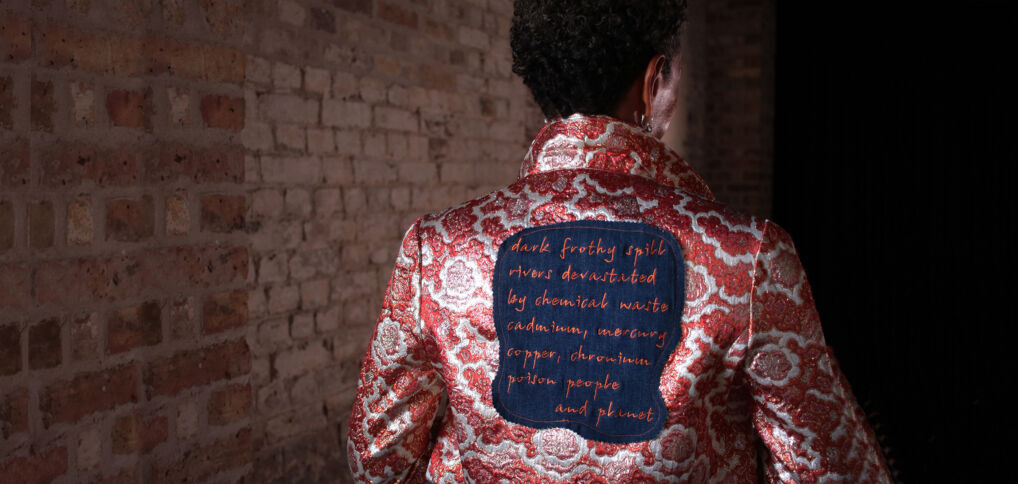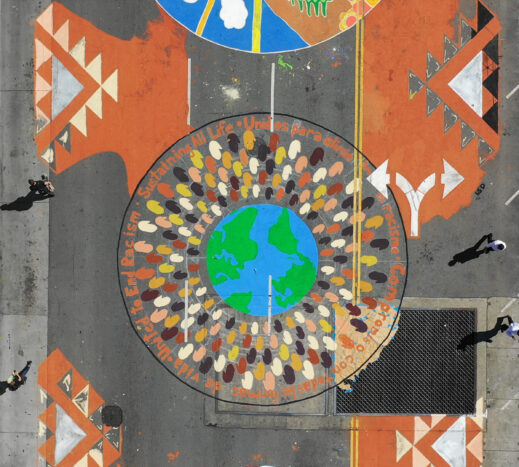
View this resource
as a PDF>>>
****
View this resource
in French>>>
****
View this resource
in Spanish>>>
What is fast fashion?
Fast fashion is the production of very cheap clothing, often in the Global South in countries such as India, China, and Indonesia. The clothing goes fast from international catwalks to shops globally and to online companies—and is fast to be thrown away.
The fast fashion industry produces 80 billion pieces of clothing each year, and women in the Global North buy twice as many clothes as they did just fifteen years ago. Clothes are being kept for an ever-decreasing amount of time. Fashion trends are becoming shorter-lived as fashion companies continually produce new designs and styles to keep people consuming.
The price of clothing has fallen dramatically in the Global North. In the 1950s, a ready-made dress sold in the United Kingdom for about £4 ($5 USD), which is £140 ($182 USD) in current money. Today a shopper can buy a simple dress for about £10 ($13 USD).
A whole generation of shoppers in the Global North expects to be able to buy cheap clothing, but the low prices are possible only because of the slavery and exploitation that exists in the fashion industry supply chain. The price of the clothing does not reflect the true cost to the farmers, spinners and weavers, tailors, finishers, quality control teams, and packers.

Garment workers receive low pay and are brutally exploited, abused, and silenced when they try to speak up about unsafe working conditions. And we are witnessing a global “race to the bottom,” with countries in the Global South competing against each other to supply the cheapest labour in a bid to attract brands to their factories.
The profit motive fuels the fast fashion industry, which has an estimated value of three trillion dollars. The fashion industry is also the second most-polluting industry in the world after oil. It produces more greenhouse emissions than international flights and shipping combined and is one of the largest consumers of freshwater on the planet. It produces 92 million tons of waste annually. Cheap clothes are made from cheap materials that when washed are responsible for an estimated 35 percent of all microplastics found in the ocean.
Women are directly targeted by the fashion industry
Women in the Global South are likely to be the most “disproportionately affected by climate crisis”—for example, by being the majority of climate refugees or being primary caregivers whose jobs become impossible as resources like clean water become increasingly scarce. These same women are also vulnerable to the fashion industry and its exploitative methods of employment.
Women make up 80 percent of the world’s 75 million garment workers. Thus when disasters happen in garment factories, women are disproportionately impacted. In the Rana Plaza disaster in Bangladesh in May 2013—the worst structural failure in modern history and the deadliest fashion-related disaster—1134 people died and 2500 were injured, the majority of them women.
Female consumers in the Global North have always been the key market for the fashion industry. Sexism and objectification affect women’s self-esteem and body image, leaving them emotionally vulnerable to pressures from the fashion industry. They are made to feel bad about themselves and then sold items of clothing to “feel better.” Many women set goals for themselves to fit into a specific size or item of clothing; the arbitrary reasoning of the fashion industry around sizing becomes a matter of personal success or failure. Women are constantly asked to consume clothing (such as “slimming” and “flattering” designs) to make their bodies look different, and the social punishments for not conforming to norms around size make these “solutions” feel very appealing. The historic exclusion of large women from the mainstream fashion industry has created a plus-size market, which sells this exclusion back to large women as empowerment.
The cycle of hope, that the next new thing will “work,” followed by disappointment, makes most women very vulnerable to the fashion industry. What clothing would we buy if we were free from the effects of sexism on our choices? What would we wear to adorn ourselves, to be practically clothed, to play and have fun with our appearance?
Young women are the primary focus

All women are targets of the fast fashion industry, but young women are the primary focus. Social media plays an important role. The rise of influencer culture and marketing has opened up a niche for fast fashion brands, often sold by online retailers, to flourish in. Thanks to social media’s constantly changing, visually-driven nature, brands have developed a symbiotic relationship with popular celebrities and influencers. Through visual platforms like Instagram, clothing choices can be scrutinised, and wearing the same outfit twice can seem taboo.
Designer fashion uses very young models, so young women often see glamorous versions of themselves in high fashion campaigns. Young women are pushed to look more glamorous and “sexier” and to perform for social media. There is also the emotional challenge of comparing real bodies to the retouched photos of models. Influencers intensify this. They are generally young women, with large followings, who present their lives and bodies using edited photos.
Fast fashion is a fact of life for many young women. They do not have the information that fashion was not always fast or that the situation could be different.
We can unify in all our differences
As women in the Global North, we are not to blame for our complicity in the damage done by fast fashion. However, we do have an opportunity, and a responsibility , to notice and heal from the deep hurts that prevent us from seeing our full worth and value on our own terms and outside of narrow societal expectations. And we have a huge opportunity to unify in all our differences to reject an industry that damages our planet and damages our perspectives about ourselves. We can do this not only to stop the climate emergency but also for our liberation from the oppression of women.
.
These issues are spelled out in a recent video of a subversive climate catwalk by a:dress, a UK-based activist project, that uses customised retro clothing, subversive catwalks, film, poetry and listening circles to explore issues of women, fast fashion, and climate justice. Instagram: a.dress.fashion


